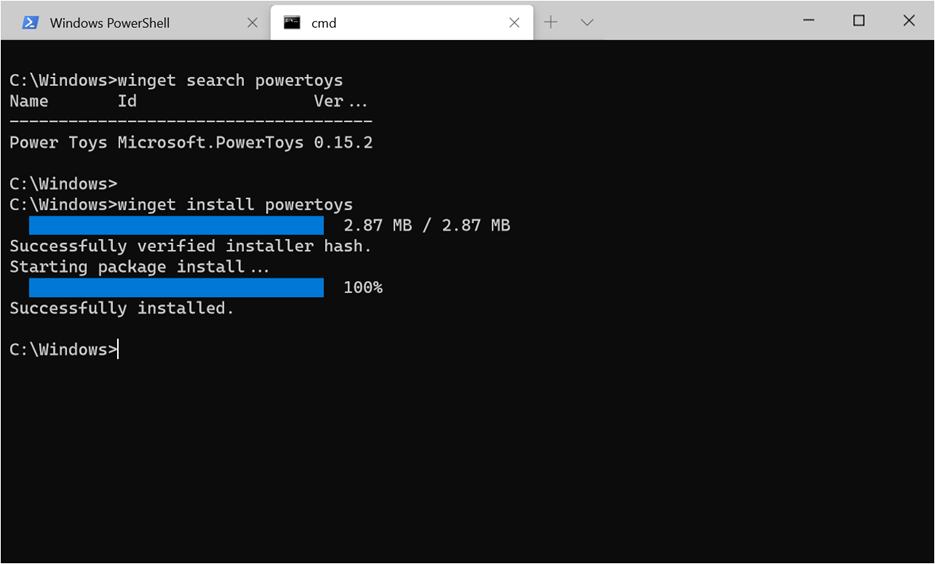In the content below, we address some of the most exciting upgrades to begin leveraging for Intune success.
Microsoft Store and Winget Integration
The update getting the most attention amongst our engineers and administrators is the new Microsoft Store and Winget Integration. The new store innovates and streamlines how apps are distributed within Intune.
With the new feature, applications in the Microsoft Store for Business will integrate for distribution with the Winget Windows Package Manager. It provides the functionality to deploy non-UWP apps which are generally referred to as Win32 apps to the Microsoft store.
What this means for customers is a more efficient means of wrapping apps in Intune. However, what some see is a downside is that Intune customers will need to take action as a result of the change. The legacy method to distribute UWP apps from the Microsoft store to Intune-enrolled devices will be deprecated. This makes the two options going forward the Microsoft Store integration or manual application wrapping/packaging for Intune deployment.

Improved Mac functionality
In the past year, Intune development for Macs has come a long way. In fact, there has been more development in Intune for Mac than we’ve seen in multiple years preceding.
Prior to the new features in the settings catalog, administrators had the ability to only target a very small number of settings. This resulted in the need to often build custom profiles to achieve your objective with Mac devices. Now, expanded functionality for Mac is available for use via the setting catalog.
There has also been a significant improvement with MacOS software updates, which permits Intune enrolled devices to automate updates while simultaneously allowing administrators to monitor the update status.
Remote Help Functionality in Intune
Surprise! Microsoft has now made the remote help functionality free to education customers. This means that customers that qualify will have an alternative to Quick Assist and other commercial tools (i.e. AnyDesk). Historically, this feature has been locked behind a paywall – making the new update a major win for those operating in the education sector.
Azure AD joined Devices now given the ability to Detect a Trusted Network
This new feature allows the ability to switch a firewall to a domain profile. The functionality also allows the detection of a resource to a network, and contingent on results switches the network profile. This is extremely useful when configuring a firewall.
The settings allow you to configure a TLS endpoint and then switch to the domain firewall profile. Historically, in domain-joined environments, you’d have public and private profiles. The result is that most businesses would make their public and private domains quite restrictive forcing those looking to connect to a network from outside to use a distinct profile. The process was risky, as these domains could be quite open and vulnerable.
With this feature, you now have the ability to auto-switch based on network resource detection. It is an improvement that significantly upgrades your local firewall management. This way you would have a relaxed firewall domain profile but more restrictive private and public profiles.
For a deeper dive, check out this article from the Microsoft Endpoint Management team: Azure AD joined devices can now detect a trusted network and switch the firewall to the domain profile
Enrolling Chrome and Linux Devices in Intune
In this new rollout, admins are able to enroll Chrome and Linux devices into Intune. The update affords admins the same ability to improve device security, manage software and applications effectively, and ensure compliance with regulations and policies on devices that were previously unmanageable in the platform.
Currently, the management capabilities of these devices are in their infancy, but we’re excited to see the enhancements Microsoft rolls out for Chrome and Linux in the future.
Upcoming Intune Features to Look Forward to
Deployment Service for Driver Updates
This new update promises admins the ability to granularly manage driver and firmware updates. The upcoming driver updates will enable the approval and scheduling of independent hardware drivers to avoid productivity interruptions for end users.
The updates put the power to automate Windows Update in the hands of engineers and administrators rather than driver OEMs. When rolled out, the administrator will effectively have the ability to control when releases from the manufacturer affect end users.
Microsoft recently reveal that a public preview for driver updates will soon be available. You can read the specifics here.
Conclusion
The sophistication of Intune continues to impress, especially with the exciting new of updated features. As Microsoft continues to innovate the Intune tool, our team is looking forward to what is in store for 2023 and beyond.
CONTACT US TO LEARN MORE ABOUT INTUNE




